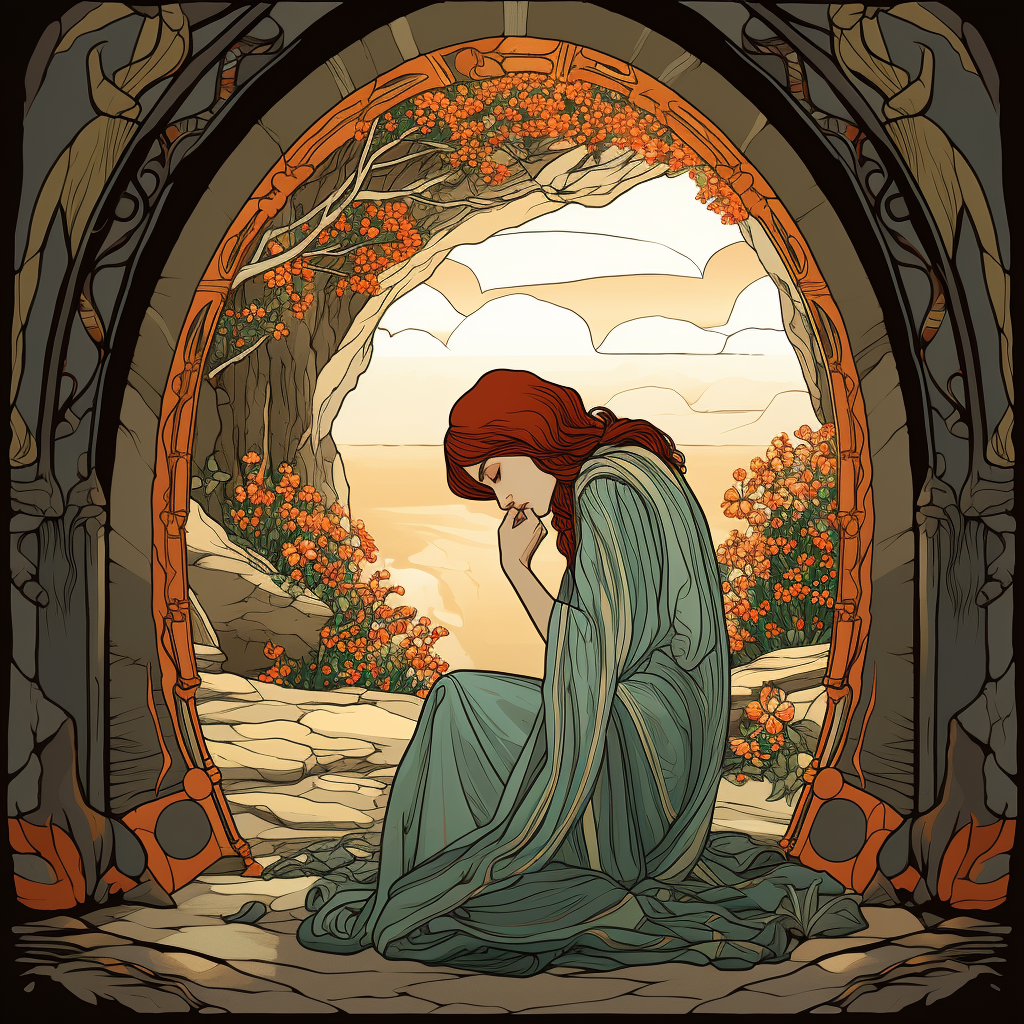Seeing Clearly Through Tears

St Mary Magdalene is such a source of comfort and hope. In her story throughout the gospels, in her treatment by so many long after her death, but especially on the morning of the Resurrection, we see someone long-suffering but not in vain. In a world where it seems every news story, every conversation, almost every encounter comes laden with news about strife of one kind or another, Mary Magdalene gives us an example of quiet steadfastness, patience, and faith lived out in an unmistakably human way.
When Mary found the tomb empty, she went to tell Simon Peter and the beloved disciple what she had seen, calling them to help. After a short examination of what was, indeed, an empty tomb where their friend's body ought to have been, the two men turned and went home. Perhaps they were in shock. Overwhelmed. Stunned at yet another impossible event delivering another impossible loss to them. Perhaps they were entirely practical about the situation. If there is no body, there's nothing to do here. Either way, Mary remained behind, alone outside the tomb.
We do not know for certain why Mary remained at the tomb as her friends left, but we are told that she wept. She had prepared herself to see her beloved teacher's body. She had not prepared herself for the grief that seeing an empty tomb would visit upon her. Throughout this story, Mary does not rationalize her feelings. She does not push them away. She sits with them as they come and, feeling so deeply the grief and loss of the last few days, she weeps. She grieves with her whole person—body, mind, heart, and spirit—in the garden outside the tomb.
Mary also waits and keeps her promise. She stands, weeping, outside the tomb where her friend was meant to be. Mary had promised, if to no one other than herself, that she would visit him and care for him this morning and even though his body is missing, she is unwilling to give up on that promise. When the gardener approaches her, Mary insists that she must see her friend's body. Even in a moment of profound grief, her faith and her great love for her friend are present. This complicated moment is also the one in which she is reunited with the friend whose absence she mourns. Through grief, faith, and love, Mary Magdalene sees new life and resurrection. Through these feelings and convictions, she becomes the first witness to God's greatest work. Mary Magdalene becomes the first apostle, the one who is sent to those who will go to the whole world.
In a world full of news and experiences that bring us worry, anxiety, loss, and grief, it can be tempting to turn around and walk away. For caregivers, when there is no end to the deluge of people in need. For healers, when no amount of medicine seems to stem the spread of contagion. For families, when their relations seem beyond their help. For the lost, when there seems no way home. For the overwhelmed, when it seems impossible that there will ever be less. For all of us, Mary Magdalene reminds us that our highest vocation and the fulfillment of our promises can sometimes be to grieve, to feel loss, and to wait for God to meet us there. Not to give up, not to abandon our callings, not to cease praying, but to admit that this moment is beyond us and to look for God's arrival in health, love, and new life.





